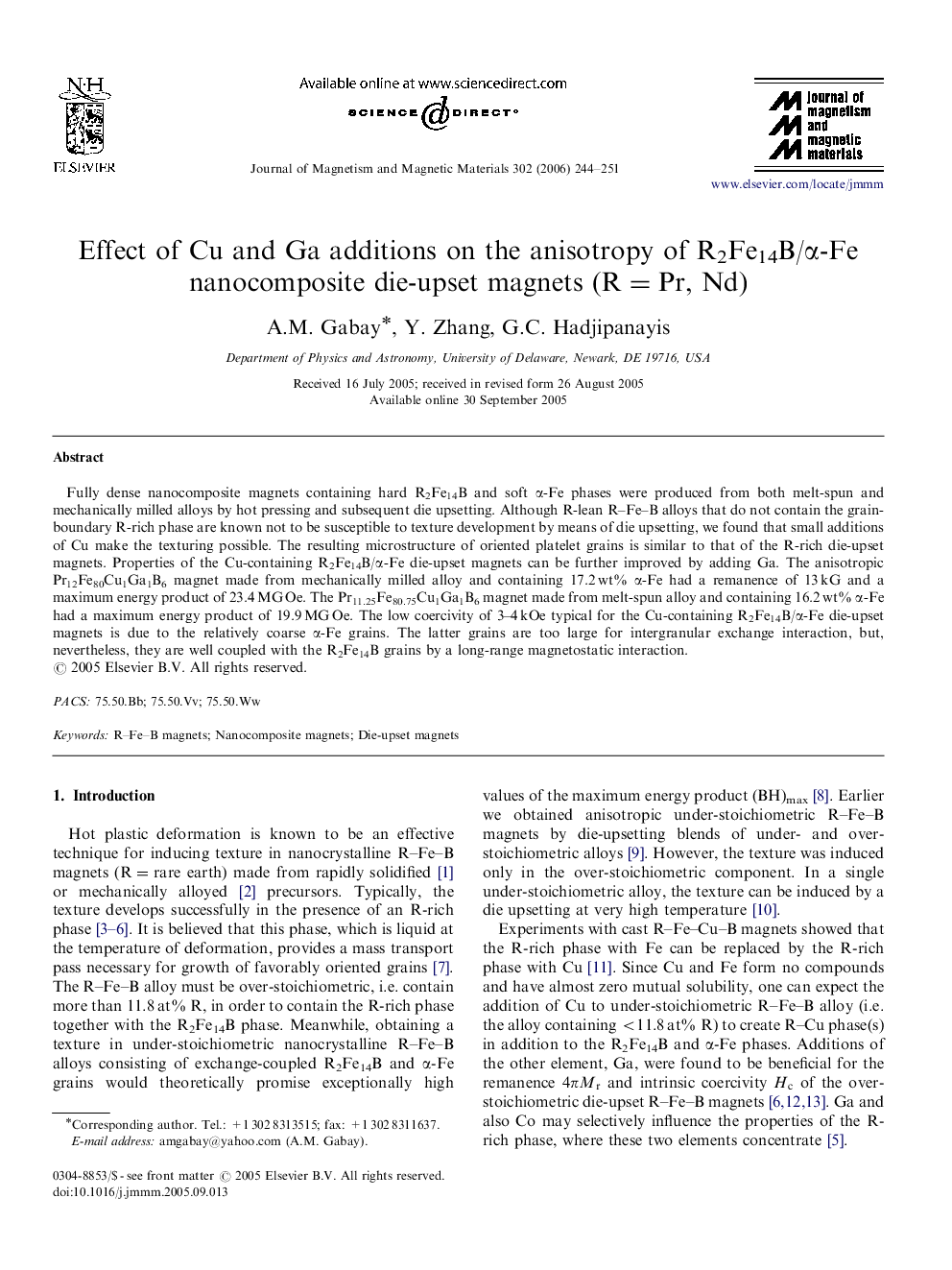| Article ID | Journal | Published Year | Pages | File Type |
|---|---|---|---|---|
| 1804959 | Journal of Magnetism and Magnetic Materials | 2006 | 8 Pages |
Fully dense nanocomposite magnets containing hard R2Fe14B and soft α-Fe phases were produced from both melt-spun and mechanically milled alloys by hot pressing and subsequent die upsetting. Although R-lean R–Fe–B alloys that do not contain the grain-boundary R-rich phase are known not to be susceptible to texture development by means of die upsetting, we found that small additions of Cu make the texturing possible. The resulting microstructure of oriented platelet grains is similar to that of the R-rich die-upset magnets. Properties of the Cu-containing R2Fe14B/α-Fe die-upset magnets can be further improved by adding Ga. The anisotropic Pr12Fe80Cu1Ga1B6 magnet made from mechanically milled alloy and containing 17.2 wt% α-Fe had a remanence of 13 kG and a maximum energy product of 23.4 MG Oe. The Pr11.25Fe80.75Cu1Ga1B6 magnet made from melt-spun alloy and containing 16.2 wt% α-Fe had a maximum energy product of 19.9 MG Oe. The low coercivity of 3–4 kOe typical for the Cu-containing R2Fe14B/α-Fe die-upset magnets is due to the relatively coarse α-Fe grains. The latter grains are too large for intergranular exchange interaction, but, nevertheless, they are well coupled with the R2Fe14B grains by a long-range magnetostatic interaction.
